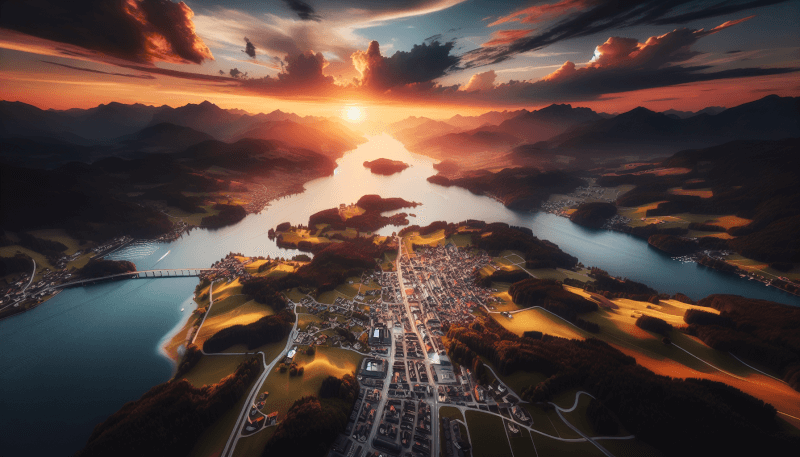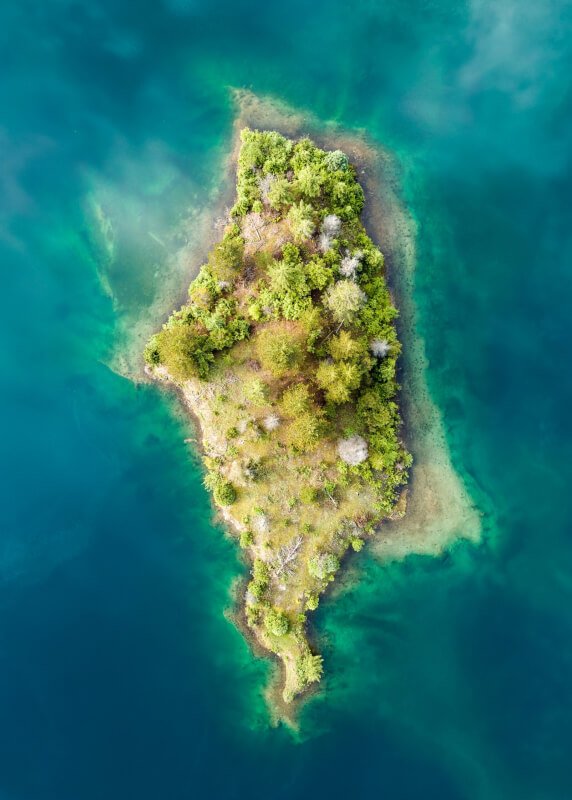So you’ve got a drone and you’re ready to take your aerial photography skills to new heights. But how do you capture stunning and captivating shots from the sky? In this article, we will reveal the top 10 drone aerial photography composition tips that will help you elevate your imagery to new heights. From finding the perfect balance in your shots to creating a sense of depth and scale, these tips will guide you in capturing breathtaking aerial photographs that will leave your viewers in awe. So buckle up and get ready to soar through the sky with your drone and create incredible aerial masterpieces!
1. Rule of Thirds
Understanding the Rule of Thirds
The Rule of Thirds is a fundamental principle of composition in photography, including drone aerial photography. It involves dividing the frame into a 3×3 grid, with the subject of the photo placed along the lines or at the intersections of the grid. By following this rule, you can create a more visually appealing and balanced shot. Instead of placing the subject directly in the center, the Rule of Thirds encourages you to think about the composition in a more dynamic and engaging way.
Applying the Rule of Thirds in Drone Aerial Photography
When it comes to drone aerial photography, the Rule of Thirds becomes even more important. By positioning your subject along the lines or intersections of the grid, you can leverage the expansive view from above to create stunning compositions. For example, if you’re capturing a landscape shot, you could place the horizon along the upper or lower third line, allowing the foreground or sky to dominate the frame. This technique adds depth and visual interest to the photo.
Experimenting with Off-Center Composition
One exciting aspect of drone aerial photography is the ability to experiment with off-center composition. Instead of always placing the subject on the grid lines, you can explore placing it slightly off-center. This technique can create a sense of movement and lead the viewer’s eye through the image. By applying the Rule of Thirds but deviating from it slightly, you can add a unique and captivating touch to your drone aerial photographs.
2. Leading Lines
Identifying Potential Leading Lines in the Landscape
Leading lines are elements within a photograph that naturally guide the viewer’s eye toward the main subject or points of interest. In drone aerial photography, there are various potential leading lines to look out for in the landscape. These can include roads, rivers, bridges, or even the natural shapes of landforms. By identifying these lines, you can use them to create a strong sense of depth and draw the viewer’s attention to specific areas of the photo.
Using Roads, Rivers, or Bridges as Leading Lines
When flying a drone, roads, rivers, and bridges can serve as excellent leading lines. By positioning the path created by these elements in your composition strategically, you can create a powerful visual effect. The lines create a sense of movement and add a dynamic quality to your photographs. For example, you can position a road diagonally from one corner to draw the viewer’s eye toward a breathtaking landscape or architectural structure.
Utilizing Natural Elements as Leading Lines
Natural elements, such as coastlines, mountains, or rows of trees, can also be used as leading lines in drone aerial photography. These elements often have distinct shapes or patterns that naturally guide the viewer’s gaze. By incorporating them into your composition, you can create a sense of depth and lead the viewer’s eye toward the main subject or points of interest. Experimenting with different angles and perspectives will help you find the most compelling leading lines in the landscape.
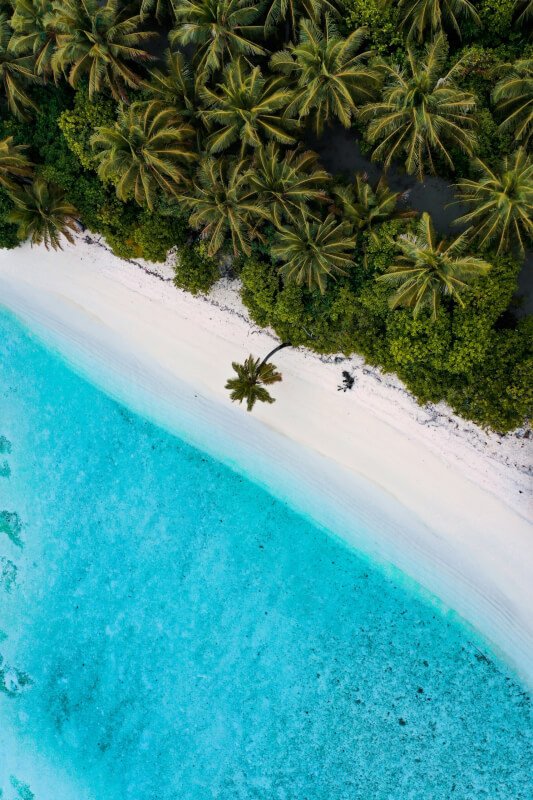
3. Framing
Using Frames to Add Depth and Interest to Your Shots
Framing is a technique that involves using elements within the image to create a frame around the main subject. This adds depth and visual interest to the photograph, drawing the viewer’s attention to the subject while also providing a sense of context. In drone aerial photography, you can utilize various elements in the surrounding environment to create frames, such as arches, windows, or trees. By incorporating these frames, you can enhance the composition and create a more captivating image.
Finding Natural Frames in the Surrounding Environment
When flying a drone, it’s important to be mindful of the surrounding environment and look for opportunities to find natural frames. These frames can be found in architecture, natural formations, or even structures like bridges or tunnels. By positioning your drone strategically and composing the shot with these frames, you can create a strong focal point and add a layer of depth to your photographs.
Experimenting with Shooting Through Objects
One exciting aspect of drone aerial photography is the ability to shoot through objects to create unique perspectives. By flying your drone close to or through objects like tree branches, windows, or even architectural structures, you can create interesting and visually engaging compositions. This technique adds a sense of intrigue and can result in captivating images with a dreamlike quality. Experimenting with different objects and angles will allow you to capture breathtaking shots that stand out from the ordinary.
4. Symmetry and Patterns
Spotting Symmetry and Patterns from Above
Drone aerial photography offers a unique perspective that allows you to spot and capture symmetry and patterns from above. These can be found in various elements of the landscape, such as buildings, roads, or natural formations. Symmetry is visually appealing and creates a sense of harmony in the photograph, while patterns add a dynamic and repetitive quality. By spotting these elements and incorporating them into your composition, you can create powerful and stunning images.
Enhancing Symmetry through Aerial Photography Techniques
When capturing symmetric elements from above, you can enhance their impact through various aerial photography techniques. One technique is to position the subject perfectly in the center of the frame to emphasize its symmetrical nature. Another approach is to play with reflection by capturing the subject in a body of water or shiny surface. Additionally, experimenting with different altitudes and angles will allow you to find the most captivating way to present the symmetry in your photographs.
Capturing Unique Patterns in the Landscape
Patterns can be found in various forms in the landscape, such as repeating lines, shapes, or textures. When shooting from a drone, you have the advantage of capturing these patterns from a bird’s-eye view, resulting in unique and mesmerizing compositions. Look for patterns in fields, forests, or even urban settings, and experiment with different perspectives to highlight the patterns and create visually striking images.
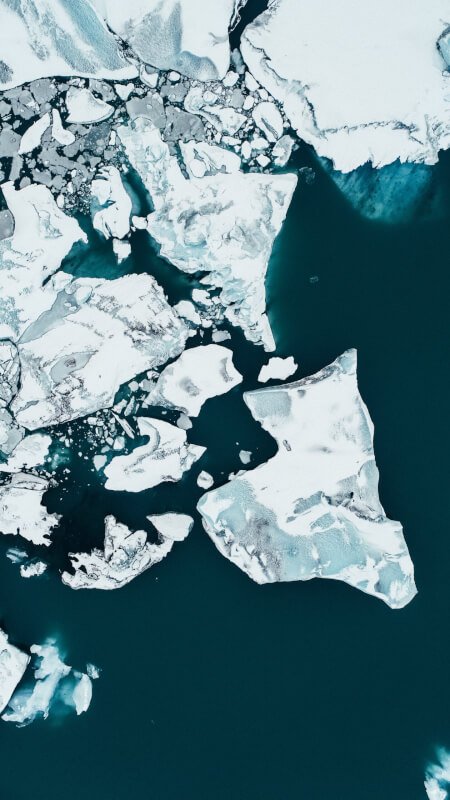
5. Foreground Interest
Importance of Including a Strong Foreground Element
In drone aerial photography, including a strong foreground element adds depth and visual interest to your shots. It provides a sense of scale and helps anchor the image, guiding the viewer’s gaze and creating a more immersive experience. A compelling foreground element can be a natural feature like a rock formation, a tree, or a body of water. By incorporating such elements, you create a stronger connection between the viewer and the photograph.
Using Landforms or Structures as Foreground Interest
Landforms or structures in the landscape can serve as excellent foreground interest in drone aerial photography. For example, a prominent mountain or a unique architectural structure can anchor the composition and draw the viewer’s eye. By positioning the drone or adjusting the altitude to showcase the foreground element prominently, you can create a more dynamic and captivating shot.
Incorporating People or Wildlife into the Foreground
Another way to enhance the foreground in drone aerial photography is by incorporating people or wildlife into the frame. This not only adds a sense of scale but also brings a human or living element into the photograph, creating a stronger emotional connection. Whether it’s a lone hiker on a trail or a group of animals grazing in a field, including these elements in the foreground can elevate the impact of your aerial photographs and tell a more compelling story.
6. Point of View
Exploring Different Angles and Perspectives
One of the major advantages of drone aerial photography is the ability to explore different angles and perspectives. With the freedom of flight, you can capture images from unique vantage points that would be impossible with traditional photography. Experiment with flying at different altitudes, angles, and directions to discover exciting perspectives that showcase the subject in a fresh and captivating way.
Changing the Altitude to Capture Unique Views
Changing the altitude of your drone can completely transform the composition and visual impact of your aerial photographs. By flying higher, you can capture a broader view of the landscape, highlighting its vastness and grandeur. Conversely, flying lower allows you to focus on smaller details and create a more intimate connection with the subject. Explore different altitudes and find the one that best suits the mood and message you want to convey in your photographs.
Utilizing Tilt and Rotation for Dynamic Shots
In addition to changing the altitude, you can also utilize the tilt and rotation capabilities of your drone to capture dynamic shots. Tilting the camera can add a sense of movement and create a more dynamic composition. Experiment with rotating the drone around the subject to capture the scene from different angles, revealing new perspectives and enhancing the visual interest of your photographs.
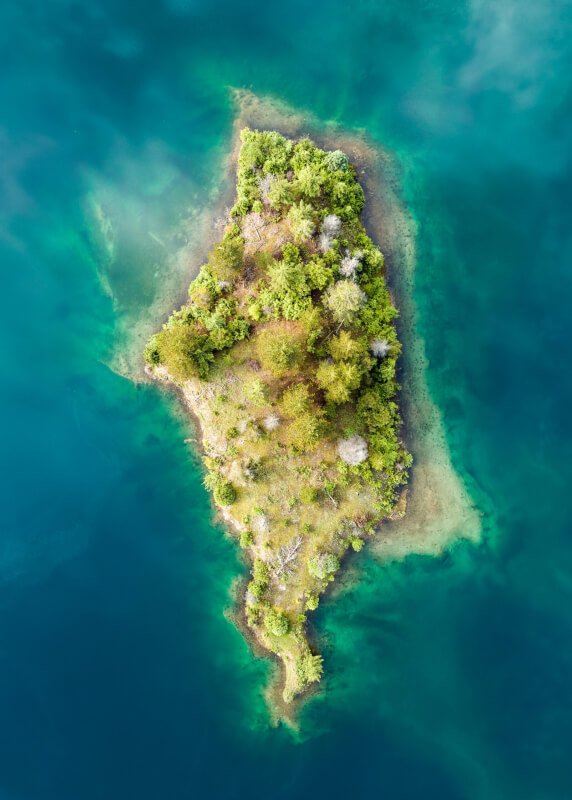
7. Balancing Elements
Considering the Positioning of Elements within the Frame
Balancing the elements within the frame is essential for creating visually pleasing and harmonious compositions. When composing a drone aerial photograph, consider the positioning of the main subject, foreground and background elements, leading lines, and negative space. By arranging and positioning these elements thoughtfully, you can create a sense of balance and visual harmony in your shots.
Creating Visual Balance through Composition
Composition plays a crucial role in achieving visual balance in your drone aerial photographs. The Rule of Thirds can be a valuable guideline for achieving balance, but don’t be afraid to experiment and deviate from it as well. Consider the visual weight of each element and how they interact with one another within the frame. Adjusting the positioning, size, or scale of elements can help create a balanced composition that is visually pleasing to the viewer.
Using the Sky or Negative Space to Balance the Shot
The sky or negative space can be effectively used to balance the composition of your drone aerial photographs. An expansive sky or a large area of negative space can counterbalance a visually heavy subject or foreground element, creating a sense of equilibrium in the shot. Use the sky or negative space strategically to achieve a well-balanced composition that draws the viewer’s eye to the main subject while maintaining overall visual harmony.
8. Color and Contrast
Highlighting Vibrant Colors in the Landscape
Color is a powerful element in photography, and drone aerial photography provides a unique opportunity to capture vibrant and captivating colors from above. Take advantage of the natural colors present in the landscape, such as lush green forests, sparkling blue waters, or vibrant autumn foliage. Use these colors as focal points in your compositions and experiment with different angles and lighting conditions to enhance their impact.
Contrasting Different Elements to Add Visual Impact
Contrast can add depth and visual impact to your drone aerial photographs. Look for opportunities to contrast different elements, such as light and shadow, warm and cool colors, or textures and patterns. By juxtaposing these elements, you create a visually striking image that captivates the viewer’s attention. Experiment with different lighting conditions and post-processing techniques to enhance the contrast and create a more dramatic effect.
Enhancing Colors and Contrast in Post-Processing
Post-processing is an essential step in maximizing the visual impact of your drone aerial photographs. It allows you to fine-tune the colors, contrast, and overall mood of the image. Adjusting the saturation, exposure, and levels of different color channels can help enhance the vibrancy of the colors. Additionally, using techniques such as dodging and burning can further enhance the contrast and add depth to your photographs. Experiment with different editing tools and techniques to find the perfect balance that brings out the full potential of your aerial shots.
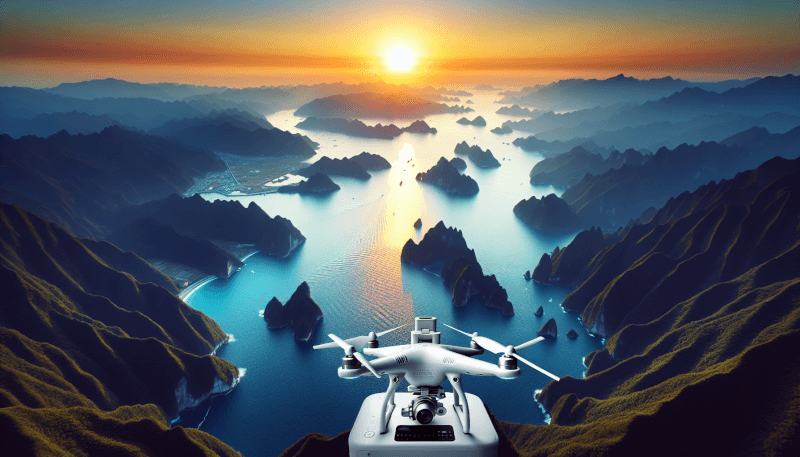
9. Scale and Perspective
Conveying the Size and Proportions of the Landscape
Drone aerial photography provides a unique opportunity to convey the immense size and proportions of the landscape. By capturing the vastness of mountains, the expanse of fields, or the length of coastlines, you can create a sense of awe and wonder in your photographs. Choose compositions that highlight the scale of the landscape and experiment with different altitudes and angles to find the perspective that best conveys its immensity.
Integrating Humans or Objects for Scale Reference
To emphasize the scale of the landscape even further, consider integrating humans or objects into your drone aerial photographs. By including a person or an object like a car or a boat, you provide a reference point for the viewer to comprehend the size of the scene. This not only adds a sense of context but also creates a stronger emotional connection. Experiment with different placements and compositions to find the most effective way to incorporate scale references into your photographs.
Experimenting with Different Focal Lengths
Another way to manipulate scale and perspective in drone aerial photography is by experimenting with different focal lengths. The focal length affects the perceived size and distance between the elements in your photographs. A longer focal length compresses the scene, making objects appear closer together and flattening the overall composition. On the other hand, a shorter focal length creates a wider field of view, enhancing the sense of depth and space. Play with different focal lengths to create diverse and captivating photographs that evoke different emotions and perspectives.
10. Weather and Lighting
Utilizing Different Weather Conditions to Tell a Story
Weather conditions play a significant role in the mood and atmosphere of your drone aerial photographs. Whether it’s a sunny day with clear skies, a misty morning, or a stormy atmosphere, each weather condition can evoke different emotions and narratives in your shots. Experiment with different weather conditions and use them to tell compelling stories through your photographs. For example, capturing a sunset over a stormy ocean can create a dramatic and breathtaking image.
Leveraging Golden Hour and Blue Hour Lighting
The golden hour and blue hour are the magical moments of the day when the sun is low in the sky, creating soft and warm light. This lighting enhances the colors and adds a pleasing, ethereal glow to your drone aerial photographs. Take advantage of these hours during sunrise and sunset to capture breathtaking shots with a magical quality. The warm hues and long shadows can create a sense of depth and evoke a tranquil and nostalgic atmosphere.
Avoiding Harsh Shadows and Overexposure
When shooting in drone aerial photography, it’s important to be mindful of harsh shadows and overexposure caused by strong sunlight. These can result in loss of detail and create unappealing contrasts in your photographs. To avoid this, consider adjusting the exposure settings of your drone or waiting for a more favorable lighting condition. By properly managing the exposure, you can capture well-balanced and visually pleasing shots even in challenging lighting situations.
In conclusion, drone aerial photography offers a wealth of opportunities for creative composition. By understanding and applying the rule of thirds, utilizing leading lines, framing your shots, incorporating symmetry and patterns, adding foreground interest, exploring different points of view, balancing elements, enhancing color and contrast, using scale and perspective, and making the most of weather and lighting, you can capture stunning and compelling images that truly stand out. So grab your drone, take to the skies, and let your creativity soar!
